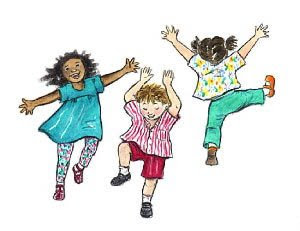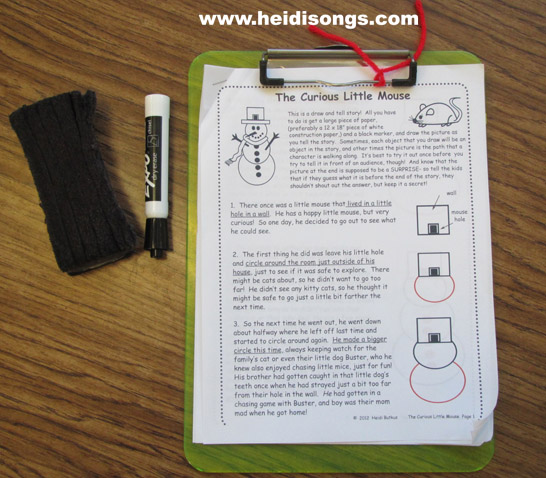Why Use Music and Movement to Teach?
Have you heard the news? We've Moved to HeidiSongs.tv!
Our new website features an online video streaming service, updated blog posts at Heidisongs.blog, and a wealth of fresh resources designed to make learning even more fun and engaging.
You can also continue shopping for our educational products there and at our Teachers Pay Teachers store!
Head over to HeidiSongs.tv now and explore all the exciting new features.
See you there!
__________________________________________________________________________

Why use music and movement to teach? I was asked this question by a young lady in Malaysia who is doing a research project to explain the benefits of using music to teach young children! I have decided to include my response in a blog entry, as it may be useful to others as well.
The benefits of using music and movement to teach are that the words and their spellings are quickly added to long term memory via music rather than short term memory. When children learn things via rote practice (drill and kill with flashcards, etc.) the activity must be repeated many, many times in order for them to learn each and every word that cannot be sounded out. Research tells us that children will need to see each and every symbol- that's every letter, number, and word- anywhere from 50 - 5000 times (depending on the research and the individual child) in order to learn. When children learn things via "elaborative rehearsal" (as with music and movement), the concept usually goes into long term memory quite easily. This is because it is fun and engaging. The children see it as a fun activity rather than a lesson. When I ask my students why we sing, they almost always say, "Because it's fun!" I have to really coach them to tell me that we do it because we are learning. (My question usually arises as a result of someone refusing to participate in the musical activity. Sometimes, they just start talking to each other instead, or start playing around. I have to remind them that refusing to sing, or ignoring the song and the movements, is the same as refusing to do a worksheet, or even worse! We are learning from this activity, and if you don't do it, you are not learning. The children that are focused on me and mimicking my movements and words are fully engaged in this multisensory activity. If they are also happy and excited, then we also have the emotional response that produces hormones that act as memory fixatives in the brain. All of these things create a situation where learning is easy, fun, and fast. This is the main advantage of teaching with music and movement. Remember that the movement component is a major part of why it works. Just playing the songs for the kids will not produce the same response in the majority of your children. Their whole bodies must be fully engaged for the words or concepts to go into long term memory.
For more information on how this works, here are some different sources that also cite this information in general:
Gardner, H. (1983). Frames of Mind: The Theory of Multiple Intelligences. New York: Basic Books.
Jensen, E. (1998). Teaching with the Brain in Mind. Alexandria, VA: ASCD.
Hannaford, C. & Pert, C. (2005). Smart Moves: Why Learning Is Not All in Your Head. Stoddard, WI Great River Books.
Mah, R. (2007). Difficult Behavior in Early Childhood: Positive Discipline for PreK-3 Classrooms and Beyond. Thousand Oaks, CA: Corwin Press.
Marzano, R., Pickering, J. & Pollock, J. (2001). Classroom Instruction That Works: Research-Based Strategies for Increasing Student Achievement, Alexandria, VA: ASCD.
Marzano, R. (2004). Building Background Knowledge for Academic Achievement: Research on What Works in Schools, Alexandria, VA: ASCD
Tate, M. (2007). Shouting Won’t Grow Dendrites: 20 Techniques for Managing a Brain-Compatible Classroom. Thousand Oaks, CA: Corwin Press.
The benefits of using music and movement to teach are that the words and their spellings are quickly added to long term memory via music rather than short term memory. When children learn things via rote practice (drill and kill with flashcards, etc.) the activity must be repeated many, many times in order for them to learn each and every word that cannot be sounded out. Research tells us that children will need to see each and every symbol- that's every letter, number, and word- anywhere from 50 - 5000 times (depending on the research and the individual child) in order to learn. When children learn things via "elaborative rehearsal" (as with music and movement), the concept usually goes into long term memory quite easily. This is because it is fun and engaging. The children see it as a fun activity rather than a lesson. When I ask my students why we sing, they almost always say, "Because it's fun!" I have to really coach them to tell me that we do it because we are learning. (My question usually arises as a result of someone refusing to participate in the musical activity. Sometimes, they just start talking to each other instead, or start playing around. I have to remind them that refusing to sing, or ignoring the song and the movements, is the same as refusing to do a worksheet, or even worse! We are learning from this activity, and if you don't do it, you are not learning. The children that are focused on me and mimicking my movements and words are fully engaged in this multisensory activity. If they are also happy and excited, then we also have the emotional response that produces hormones that act as memory fixatives in the brain. All of these things create a situation where learning is easy, fun, and fast. This is the main advantage of teaching with music and movement. Remember that the movement component is a major part of why it works. Just playing the songs for the kids will not produce the same response in the majority of your children. Their whole bodies must be fully engaged for the words or concepts to go into long term memory.
For more information on how this works, here are some different sources that also cite this information in general:
Gardner, H. (1983). Frames of Mind: The Theory of Multiple Intelligences. New York: Basic Books.
Jensen, E. (1998). Teaching with the Brain in Mind. Alexandria, VA: ASCD.
Hannaford, C. & Pert, C. (2005). Smart Moves: Why Learning Is Not All in Your Head. Stoddard, WI Great River Books.
Mah, R. (2007). Difficult Behavior in Early Childhood: Positive Discipline for PreK-3 Classrooms and Beyond. Thousand Oaks, CA: Corwin Press.
Marzano, R., Pickering, J. & Pollock, J. (2001). Classroom Instruction That Works: Research-Based Strategies for Increasing Student Achievement, Alexandria, VA: ASCD.
Marzano, R. (2004). Building Background Knowledge for Academic Achievement: Research on What Works in Schools, Alexandria, VA: ASCD
Tate, M. (2007). Shouting Won’t Grow Dendrites: 20 Techniques for Managing a Brain-Compatible Classroom. Thousand Oaks, CA: Corwin Press.








